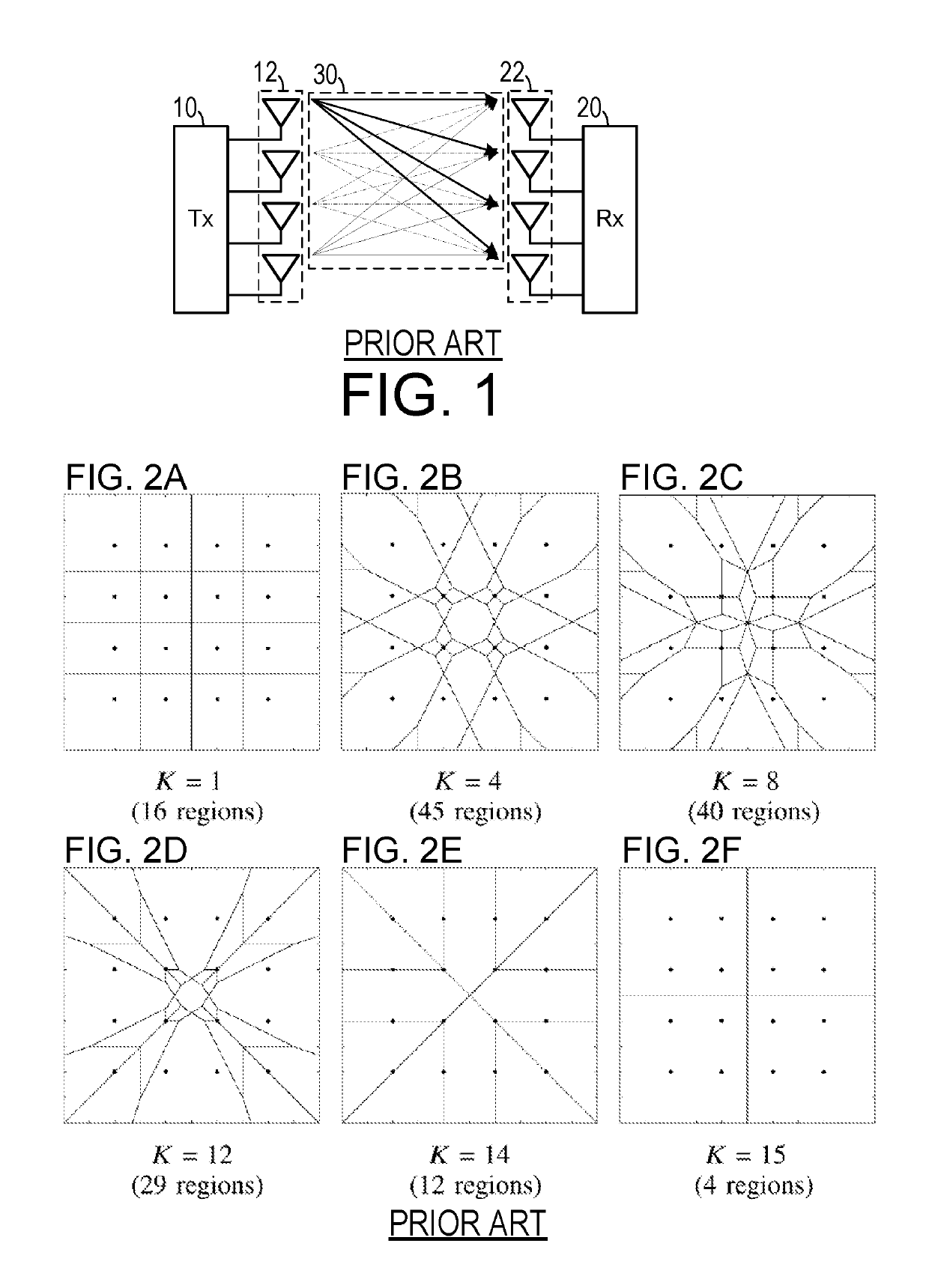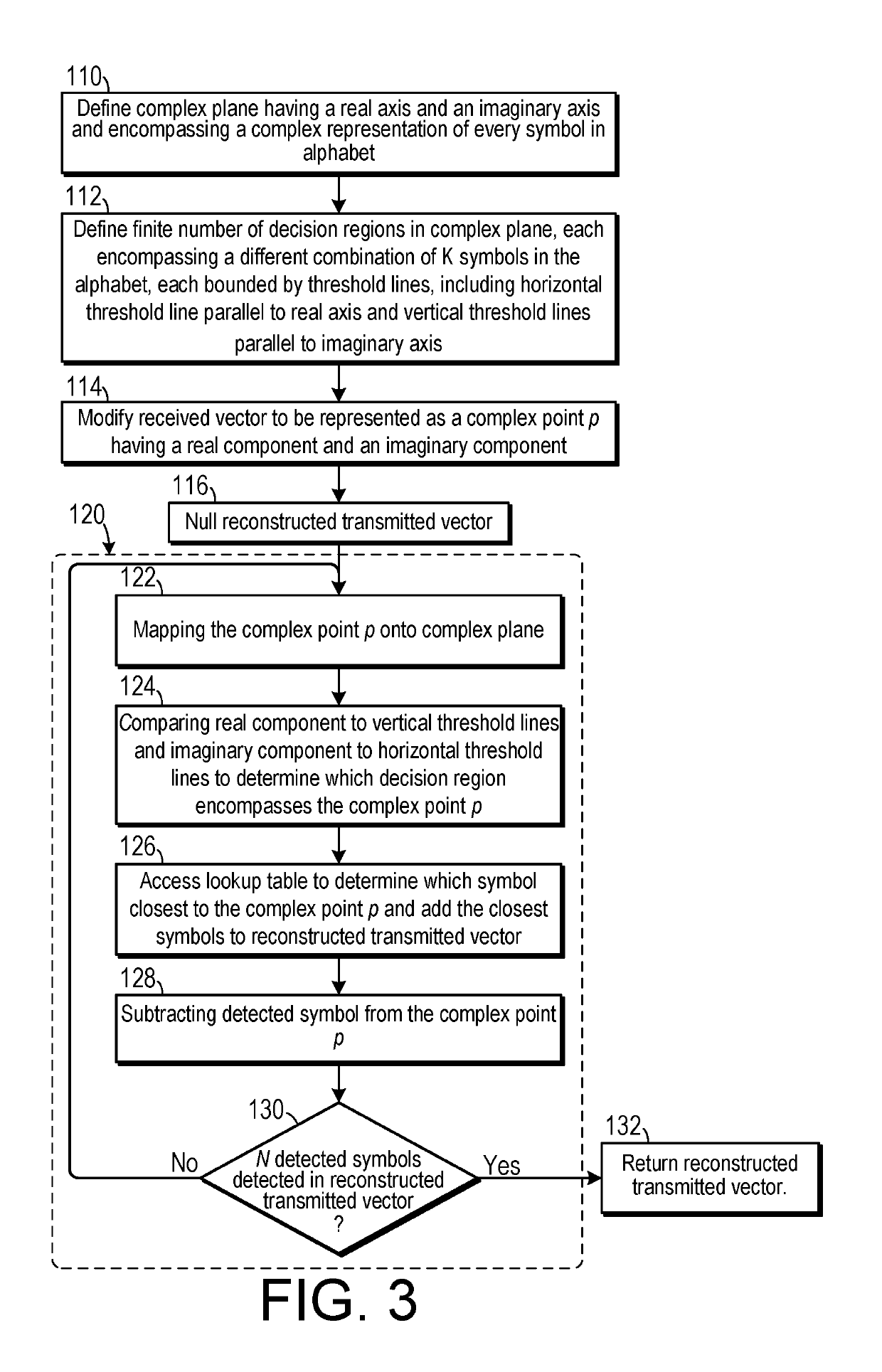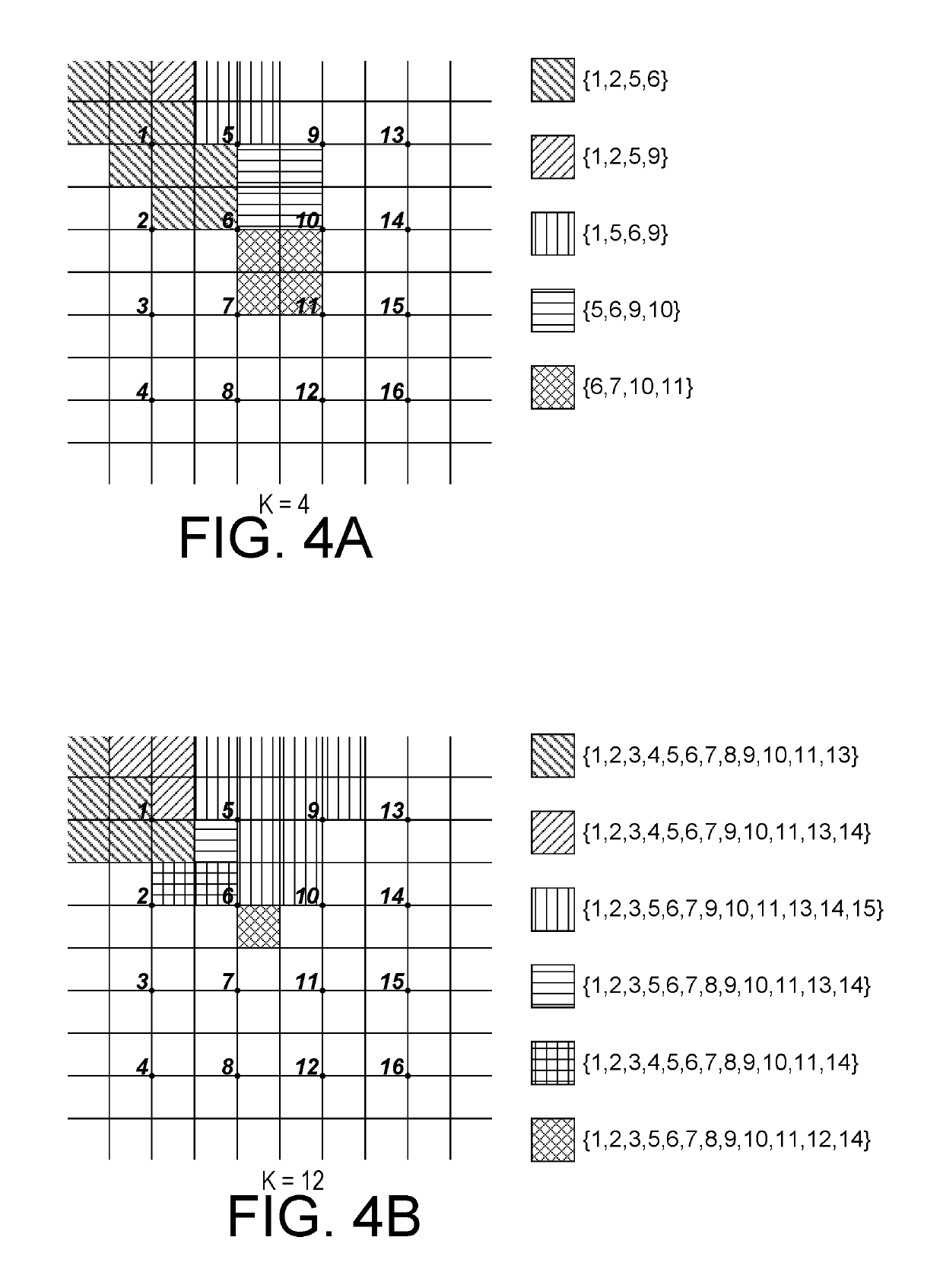Method for slicing K-best detection in multiple-input multiple-output wireless communications system
a wireless communication system and k-best detection technology, applied in the field of communication systems, can solve the problems of complex detection, difficult or complete np, and the inability to detect complex symbols in all but the simplest of systems, so as to enhance the power efficiency of wireless communication receivers, reduce processing delays, and low complexity
- Summary
- Abstract
- Description
- Claims
- Application Information
AI Technical Summary
Benefits of technology
Problems solved by technology
Method used
Image
Examples
Embodiment Construction
[0047]A preferred embodiment of the invention is now described in detail. Referring to the drawings, like numbers indicate like parts throughout the views. Unless otherwise specifically indicated in the disclosure that follows, the drawings are not necessarily drawn to scale. As used in the description herein and throughout the claims, the following terms take the meanings explicitly associated herein, unless the context clearly dictates otherwise: the meaning of “a,”“an,” and “the” includes plural reference, the meaning of “in” includes “in” and “on.”
[0048]U.S. Pat. No. 6,636,568, issued to Kaous, discloses a MIMO system and is incorporated herein by reference for the purpose of disclosing such systems. U.S. Pat. No. 7,720,169, issued to Reuven et al., discloses multiple-input multiple-output (MIMO) detectors and a MIMO detector employing a K-best detection scheme, and is incorporated by reference herein for the purpose of disclosing such schemes.
[0049]As shown in FIG. 3, one embod...
PUM
 Login to View More
Login to View More Abstract
Description
Claims
Application Information
 Login to View More
Login to View More - R&D
- Intellectual Property
- Life Sciences
- Materials
- Tech Scout
- Unparalleled Data Quality
- Higher Quality Content
- 60% Fewer Hallucinations
Browse by: Latest US Patents, China's latest patents, Technical Efficacy Thesaurus, Application Domain, Technology Topic, Popular Technical Reports.
© 2025 PatSnap. All rights reserved.Legal|Privacy policy|Modern Slavery Act Transparency Statement|Sitemap|About US| Contact US: help@patsnap.com



